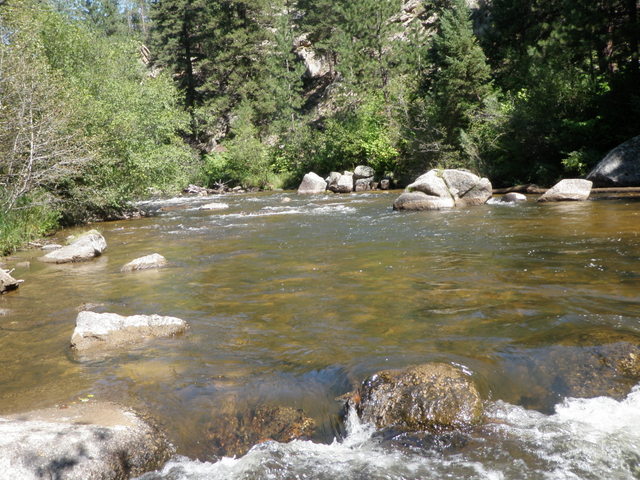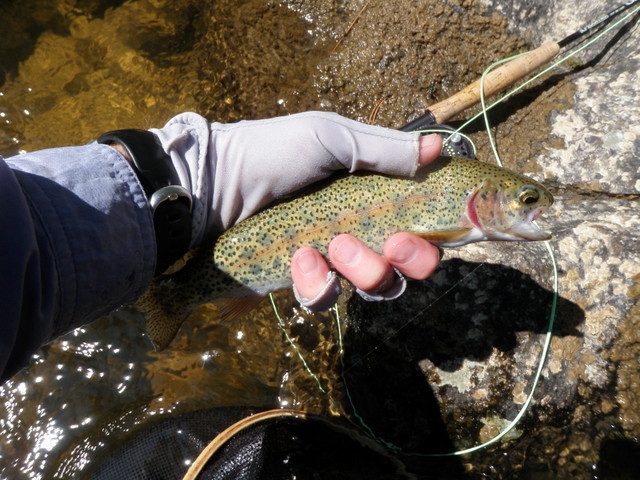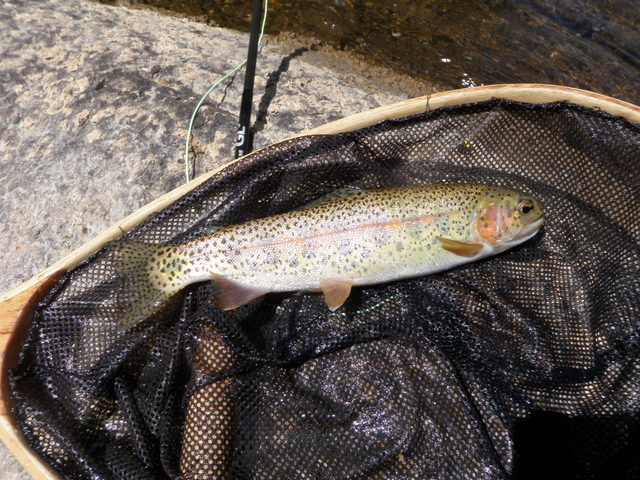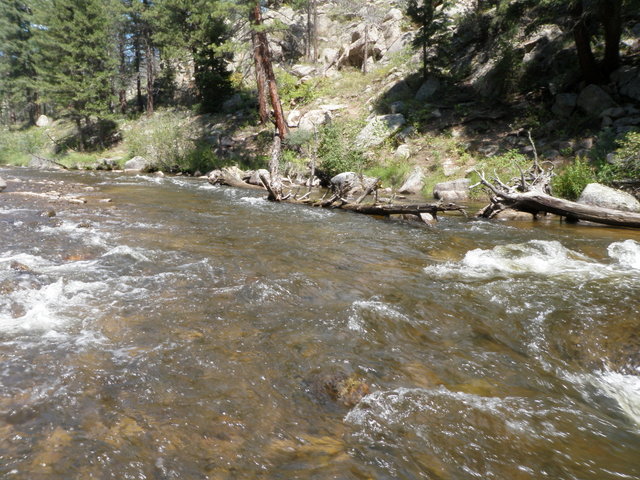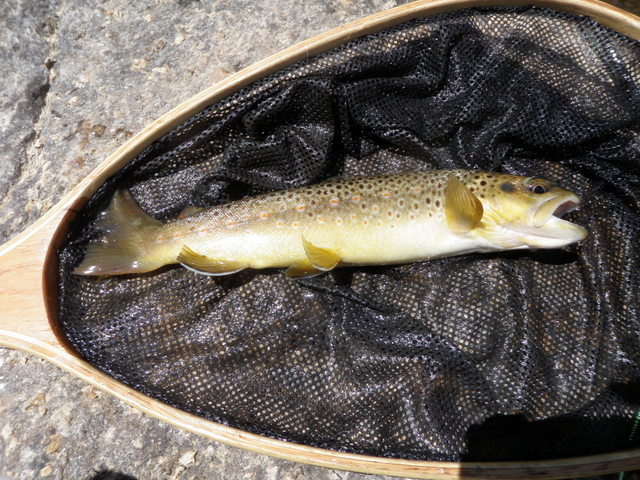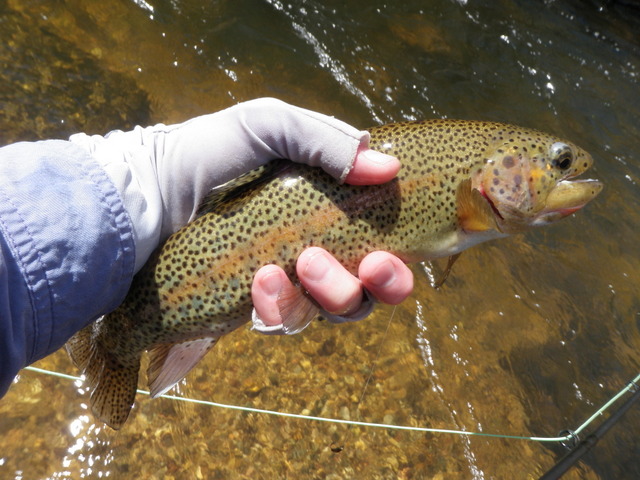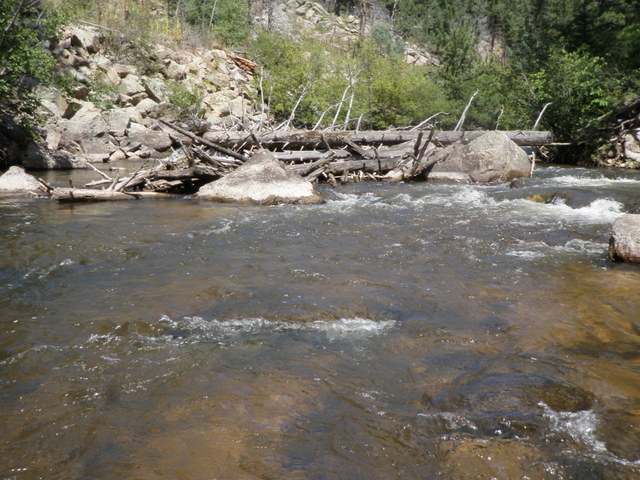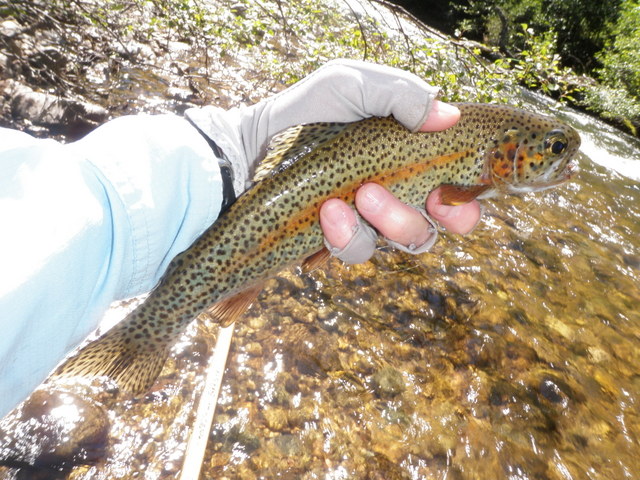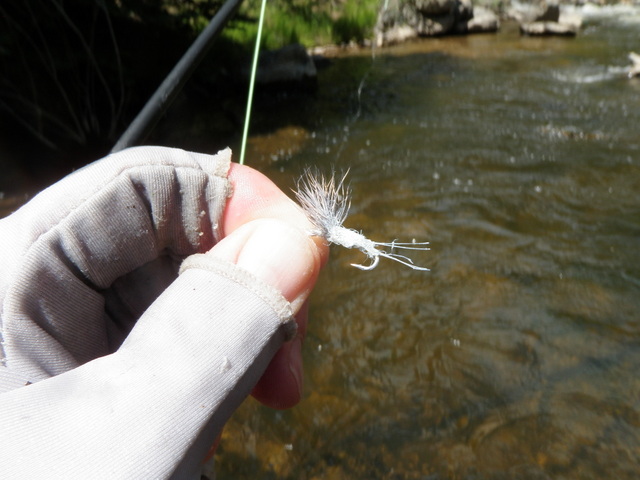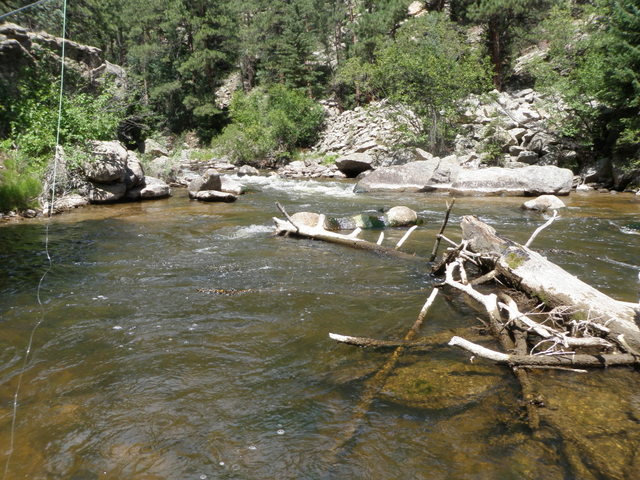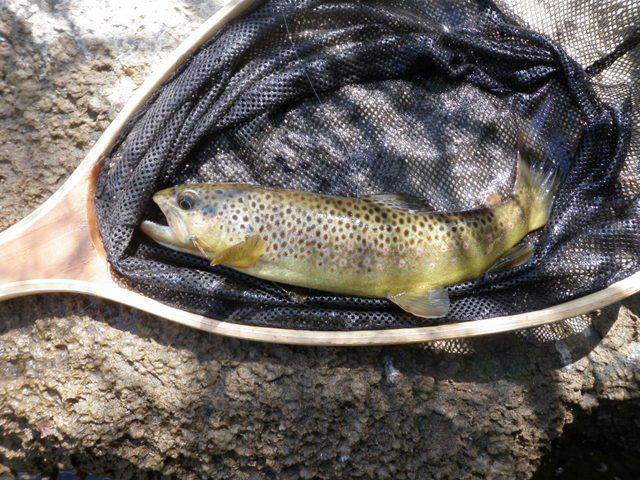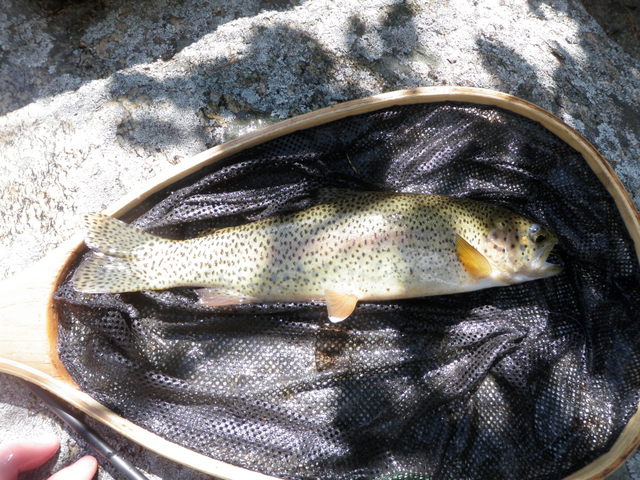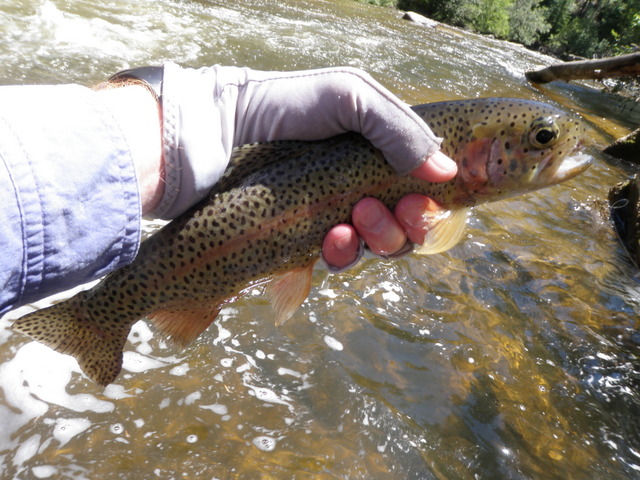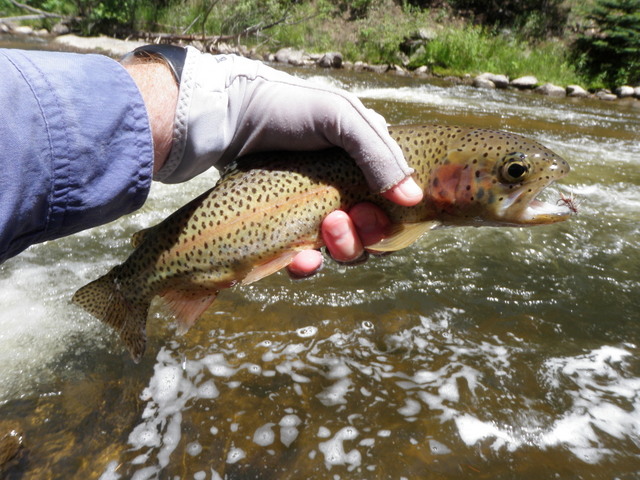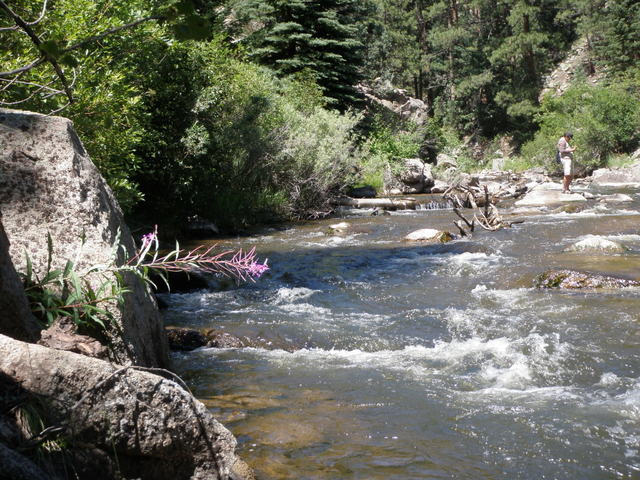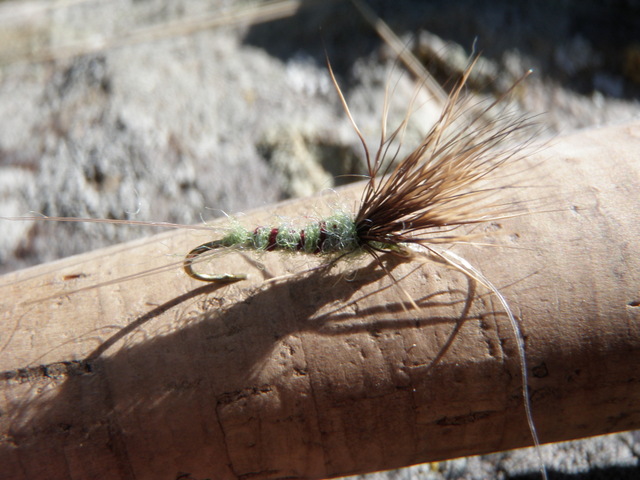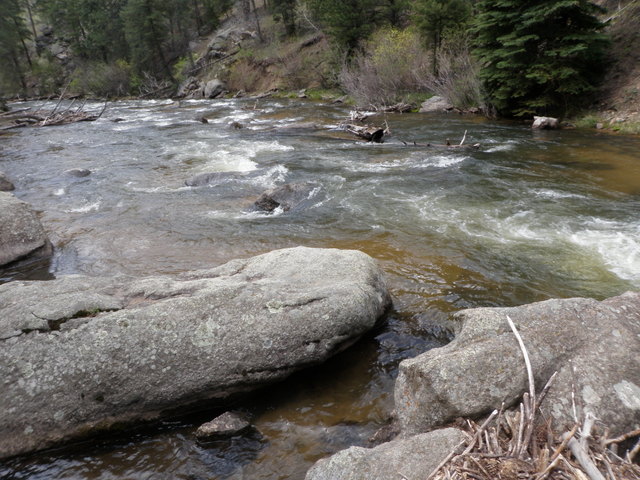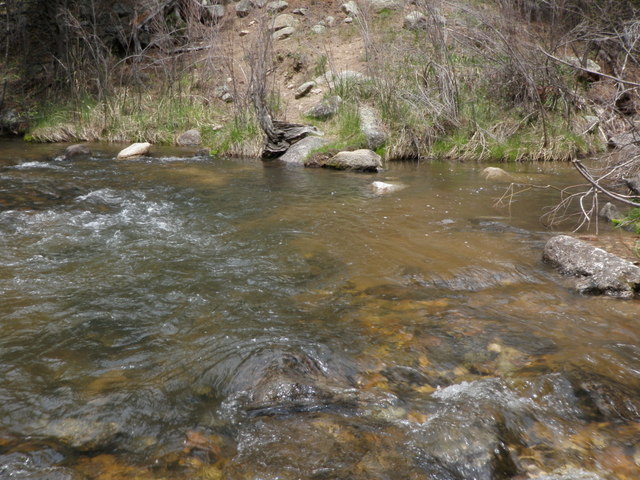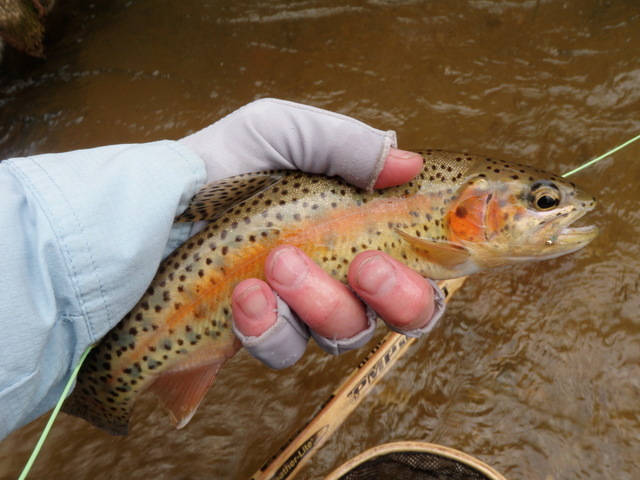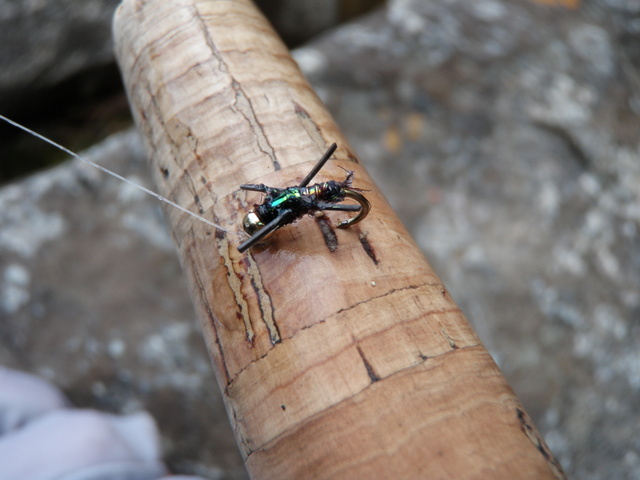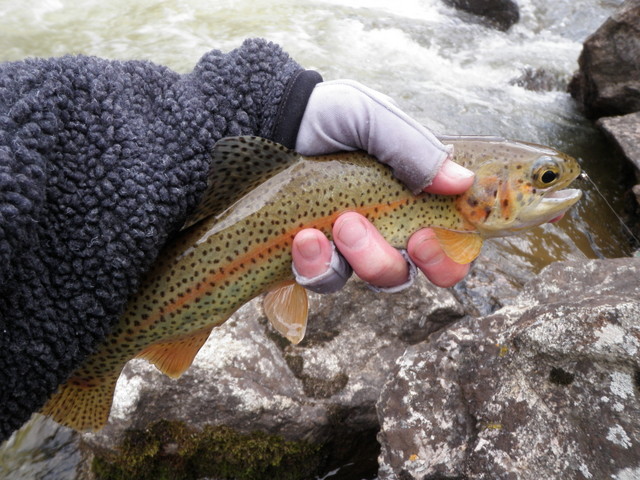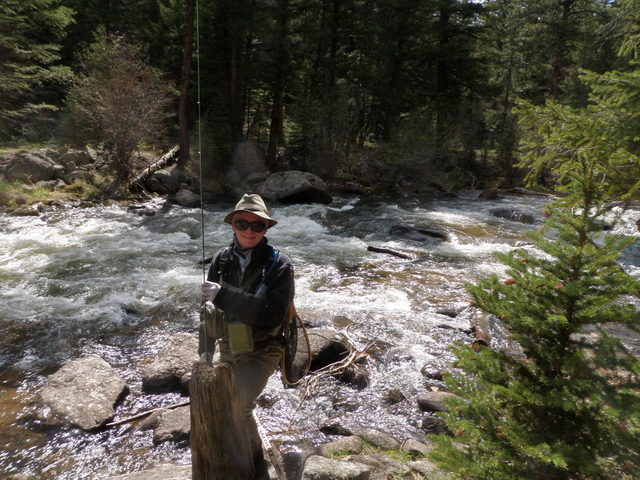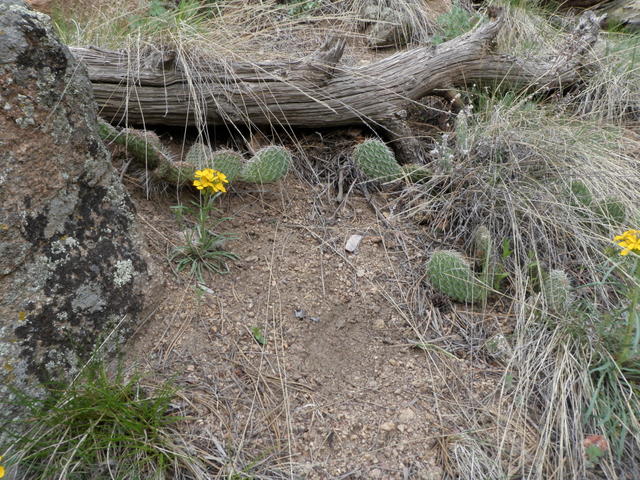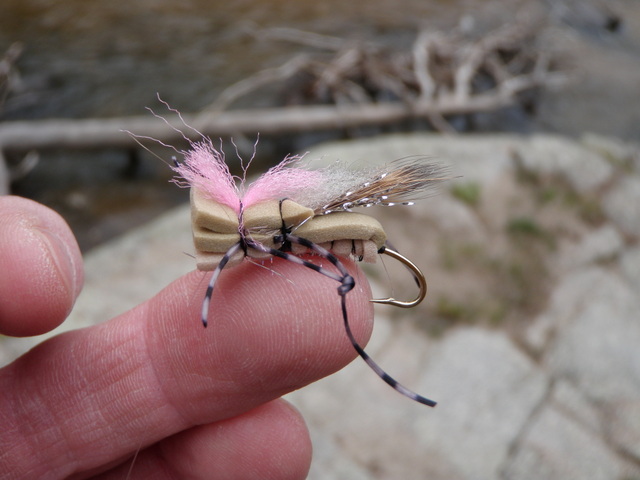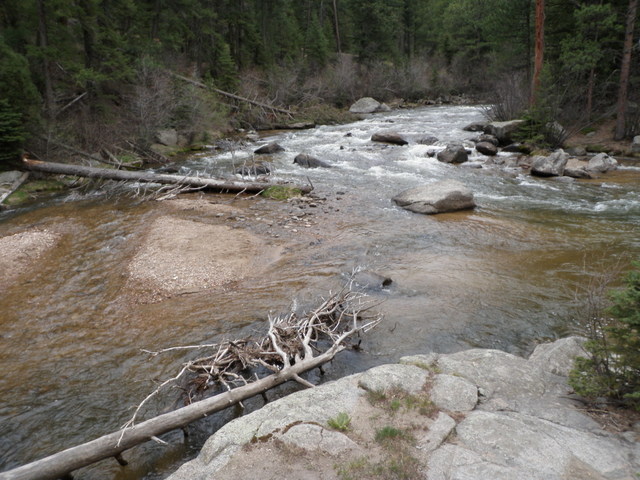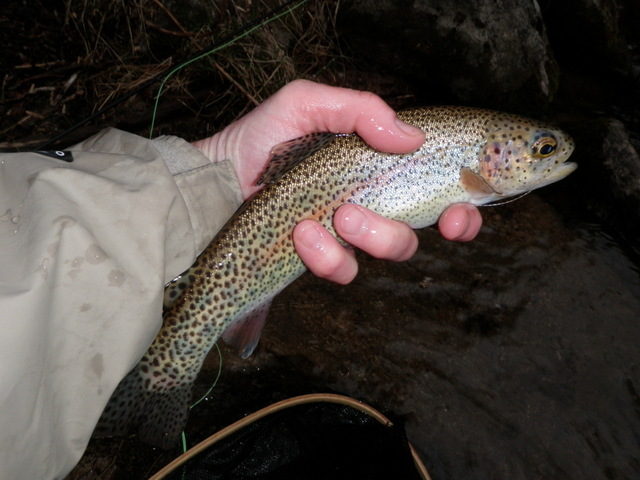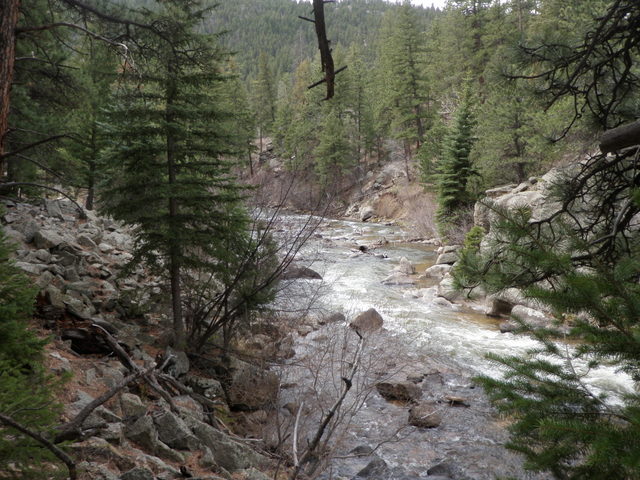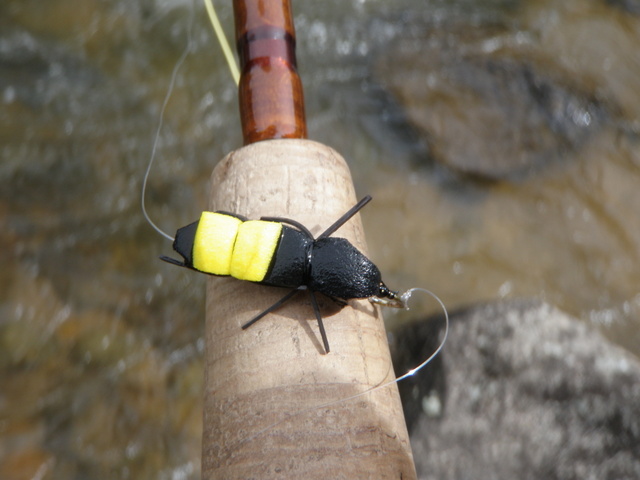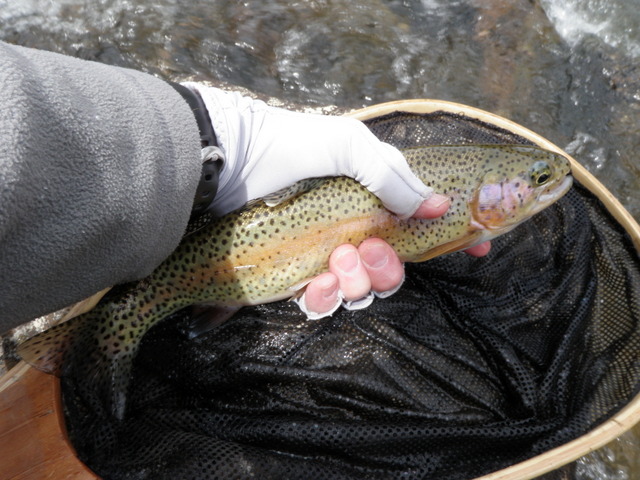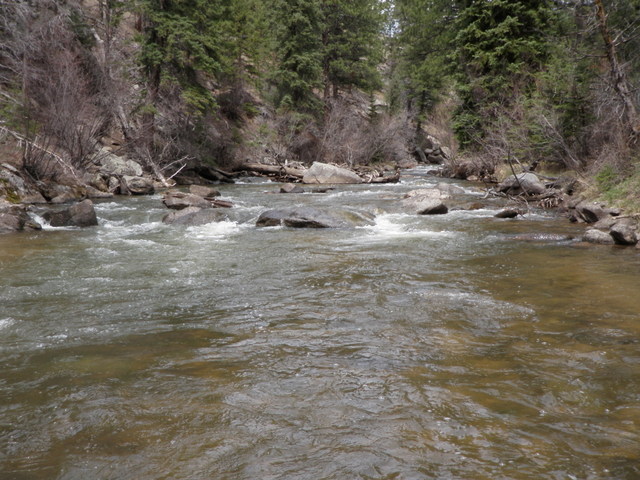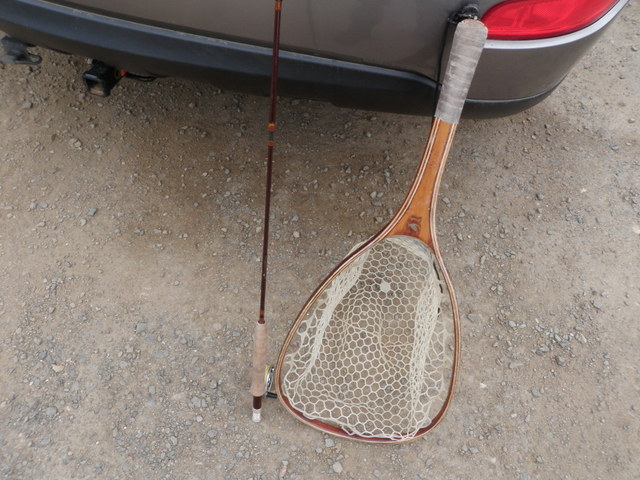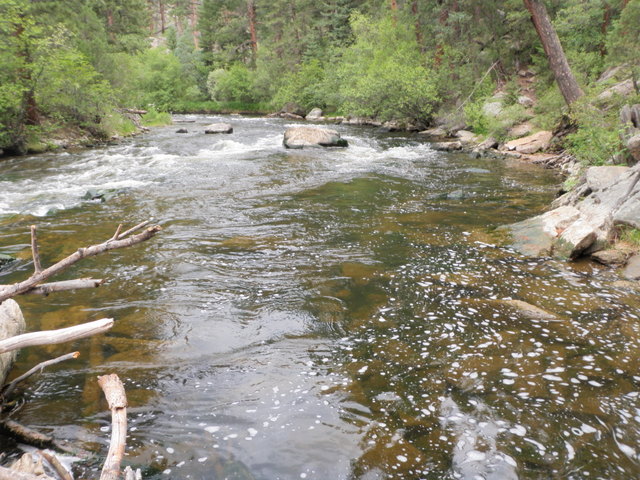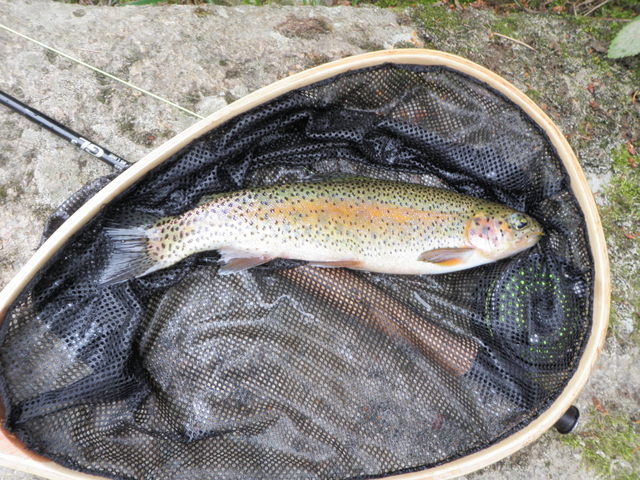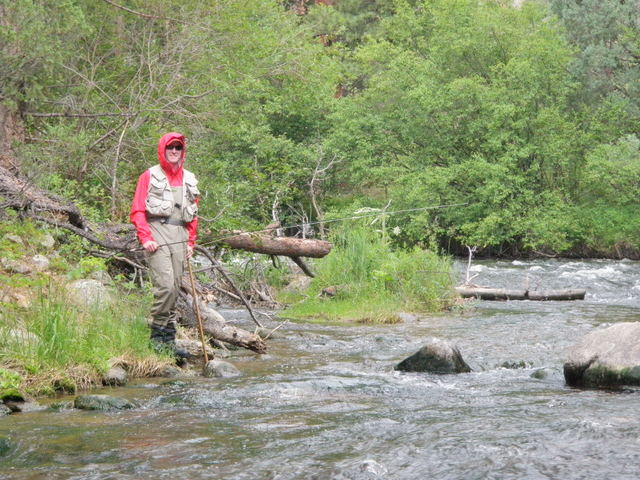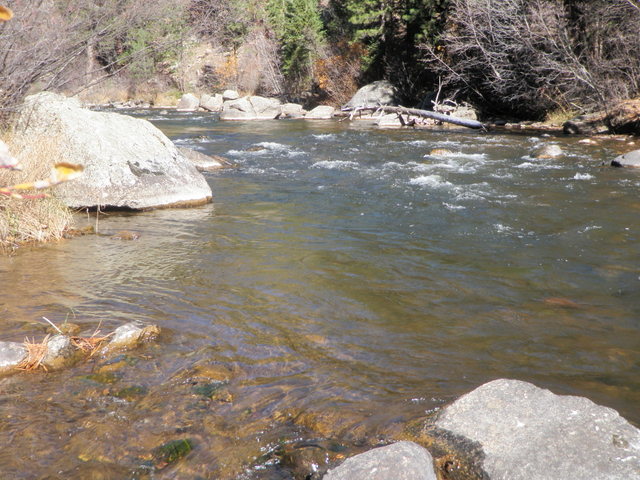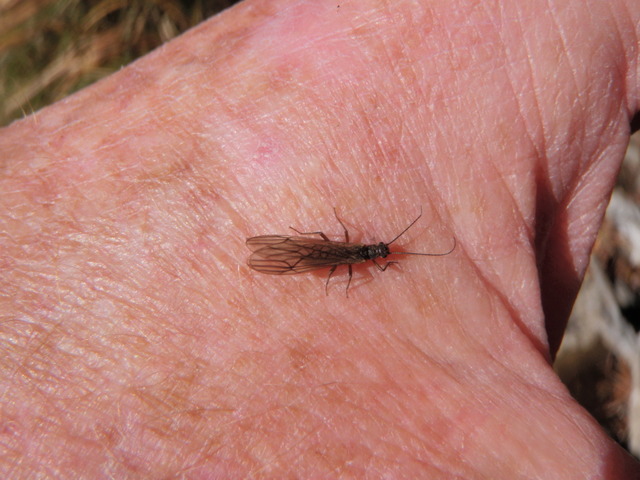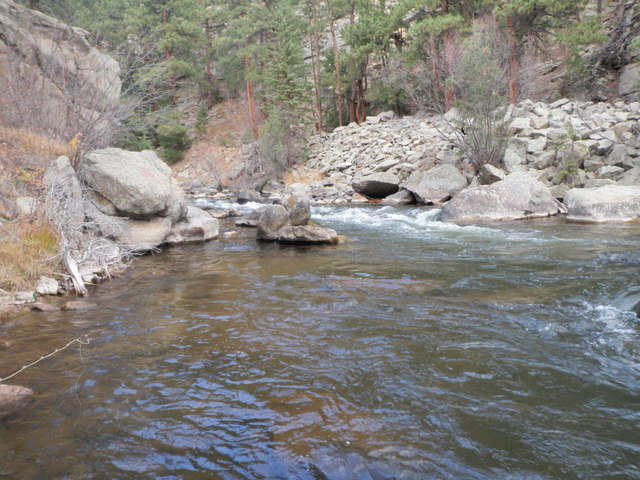Time: 11:00AM – 2:30PM
Location: Near the end of the trail then back up stream to the rock slide area
Fish Landed: 6
South Boulder Creek 04/01/2015 Photo Album
Retirement. When I was in my 30’s and 40’s this seemed like a goal that could never be attained. I worked long hours to earn promotions to support my wife and two children, and I could only dream of one day being retired. What would it be like to wake up each day and set one’s priorities while detached from work commitments? For the past seven years I enjoyed the flexibility of a part-time position, but since Jane’s retirement in June 2014 I yearned for even more freedom.
Retirement Gift from Saddleback Design
Today it began. Today was my first full day of unfettered life. What would I do? It was April 1, and the weather forecast projected highs in Denver in the low 70’s. Thursday and Friday conversely called for rain and cooler temperatures and even a rain and snow mix. Certainly I should take advantage of the last gasp of abnormally warm spring temperatures before old man winter paid a return visit to Colorado. Finishing taxes and catching up on mail and generating a post-retirement budget could wait until the bad weather rolled into Denver.
A gentleman at work told me that the stream conditions in South Boulder Creek were ideal, so I made this my choice to fish on Wednesday, April 1. Flows were 34cfs which is a bit low, but I did not check until I arrived back home at the end of the day. I arrived at the upper parking lot just after 10AM, and by the time I put on my waders and gathered all my necessary equipment for a day in the canyon and then hiked for a half hour, I began fishing at eleven o’clock. It was quite overcast and a chilly breeze blew down the canyon, and I wished I’d brought more layers than just the thin Marmot raincoat that was a Christmas gift from Jane. There were only a few other fishermen, so I had the freedom to wade and roam without any interference.
First Brown Landed on South Boulder Creek
I began my quest for South Boulder Creek trout by tying a dark olive caddis to my tippet, but after covering several attractive areas without so much as a refusal, I switched to a gray stimulator size 14. This did not change my fortunes so I converted to a Chernobyl ant trailing a salvation nymph and a RS2. Eventually this combination yielded a ten inch brown trout, and I was pleased to be on the scoreboard. Unfortunately this combination of flies did not live up to my heightened expectations, but I did manage another brown on the RS2 in a pool teaming with visible fish. It took a large quantity of casts to finally convince this fish to grab the trailing size 20 nymph. I observed small midges in the air, so I switched the RS2 for a beadhead zebra midge, but this did not seem to be what the fish were seeking. I could see them shifting their mouths from time to time to eat something in the drift, and they were hovering a couple feet below the surface.
A Very Inviting Pool
At 1PM I was feeling quite chilled as my feet turned to stumps, and I yearned for my New Zealand brimmed hat with earflaps and an extra fleece layer. I decided to pause and eat my lunch along the creek while warming my feet. During this lull the sun peeked out, and this warmed my body considerably. After lunch I abandoned the morning flies and returned to a beadhead hares ear with a non-beadhead soft hackle emerger, and these flies were topped by a Charlie Boy hopper. The period after lunch when the sun was bright was the highlight of my day, as I landed three more small fish, as two chomped the beadhead hares ear, and one snatched the soft hackle emerger. I never really saw any blue winged olives, but I used subsurface BWO imitations with the hope that they were in the drift.
A Nice Rainbow by South Boulder Creek Standards
By 2:30 some dark clouds rolled in from the west and blocked the sun, and I once again developed a chill. I had not landed a fish in the last 30 minutes, so I reeled up my line and hooked the soft hackle emerger to the rod guide. I had changed the Charlie Boy for a tan pool toy, and a RS2 replaced the hares ear, and then below that a beadhead soft hackle emerger replaced the one with no bead.
The Rainbow Out of the Net
I began hiking the Walker Loop Trail while anticipating the warmth of the Santa Fe, but when I arrived at the bridge, I stopped and observed the water downstream for a few minutes. I spotted a trout in a deep trough behind a large submerged boulder, so I decided to attempt to catch this sighted fish. I flicked the hopper and trailing flies ten feet above the visible trout and allowed them to drift downstream to the trough. In a flash the pool toy dipped, and I set the hook and landed a nice rainbow trout. This gave me a boost of confidence, so I continued fishing upstream above the bridge for a bit, but my luck expired, and I once again committed to hiking back to the car.
The weather was not what I anticipated, and six small trout over three hours is not the definition of hot fishing, but it still beat working. It was a great start to my retirement years, and hopefully I can continue to remain healthy and active so that I create more blog post experiences.

